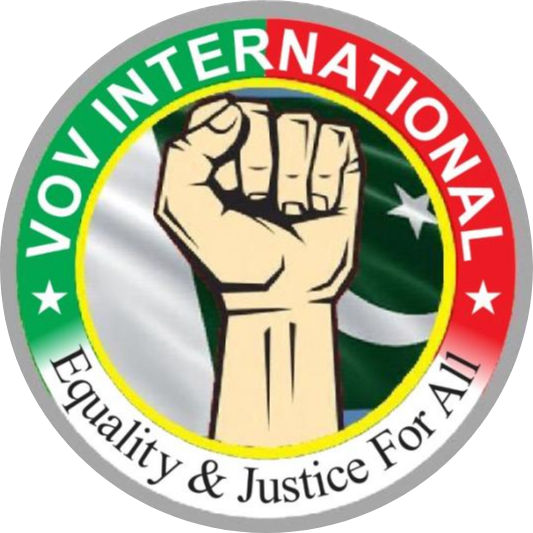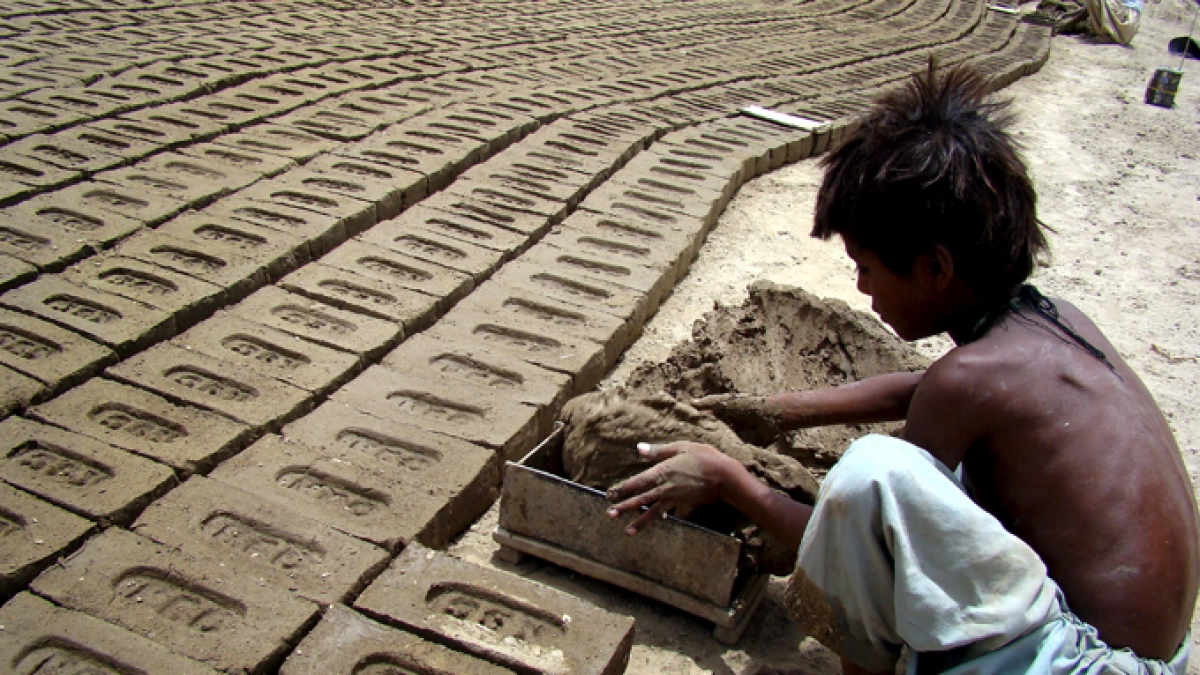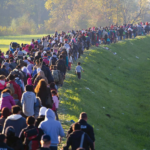How did this come to our attention?
Slavery is more than a crime. it is an offense against human dignity, every case of exploitation represents a failure of someone to respect the inherent human dignity of another.
Yet we live in a world where human beings are bought, sold, and forced into exploitation in their tens of millions. above all vov International is committed to promoting and protecting human dignity, from which all rights and freedom flow.
VOV International chooses to work in a way which respects the expertise and right to self – determination of local activists. We aim to contribute to the building up of local networks in recognition of the truth no one organization alone can end slavery.
We aim not to impose our ideas from the center, but to listen to amplifying local voices, practicing patience in all alliances. It is our belief that this way of operating means that we can be a catalyst for positive change in the front-line movement against modern slavery adding capacity where we can and supporting in other ways where our role is better fulfilled that way.
WHAT CAN WE DO
We partner with antislavery organizations in Italy, Europe, and across the globe to identify answers to that questions and share the possibilities with the general public. We partner with organizations working on the ground, our initiatives impact hotspots the world.
OUR SLAVERY GOALS
To connect with national and international organizations and take action to end slavey.
We are building activists ,law enforcement and service provider to support the victims and truly
abolition the practice.
Our approach
CHALLENGE: Today, at around 49 million people , there are more slaves in the world than ever before. Though investment in anti-slavery work has increased, there is little evidence to suggest that slavery is
decreasing.
VISION: A world without slavery in which the human dignity of every person is respected.
MISSION: To end slavery and human trafficking in some of the worst affected areas in the world , especially in Pakistan through frontline abolitionists.
UNITED NATION HUMAN TRAFFICKING DEFINATION
Human Trafficking is the recruitment, transportation, transfer, harbouring or receipt of people through force, fraud or deception, with the aim of exploiting them for profit. Men, women and children of all ages and from all backgrounds can become victims of this crime, which occurs in every region of the world.
There are many forms today, which are as follow:
Domestic Servitude
Employees working in private homes are forced or coerced into serving and/or fraudulently convinced that they have no option to leave. Victims of domestic servitude may appear to be nannies or other domestic help,
but the moment their employment arrangement transitions into a situation whereby they cannot leave on their own free will, it becomes a case of enslavement.
The circumstances of live-in help can create unique vulnerabilities for victims. Domestic workplaces are connected to off-duty living quarters and often not shared with other workers. Such an environment can isolate domestic workers and is conducive to exploitation because authorities cannot inspect homes as easily as
they can formal workplaces.
Domestic servitude can also be a form of bonded labor. This form of slavery happens when migrant workers reach a destination country, and they incur a debt for their travel and/or a recruitment fee. Though working, if their employer or recruiter adds on additional costs that can never be repaid, like housing or food,
then the arrangement has transitioned into a form of slavery. This problem is compounded when employers or recruiters neglect legal documentation or confiscate it because migrant domestic workers are often fearful of reporting the abuse for fear of legal consequences.
Forced Labor
Human beings are forced to work under the threat of violence and for no pay. These slaves are treated as property and exploited to create a product for commercial sale.
An estimated 20.9 million are victims of forced labor, a type of enslavement that captures labor and sexual exploitation. Forced labor is most like historic American slavery: coerced, often physically and without pay. All other categories of slavery are a subset of forced labor and can include domestic servitude, child labor, bonded labor and forced sex. State authorities, businesses and individuals force coercive labor practices upon people in order to profit or gain from their work.
Not included in the International Labor Organization’s (ILO) definition – or their estimate of 20.9 million people trapped in forced labor – are cases of trafficking for organ removal, forced or child marriages and forced adoptions. Forced labor is the type of enslavement used across the world to produce many products in our global supply chains. The fishing, textile, construction, mineral and agriculture industries are particularly laced with forced laborers. The private economy – businesses and individuals seeking to create a profit – exploits 90% of the world’s forced laborers, meaning that the desire to produce a profit is the largest motivating force behind the institution of slavery.
Many state and rebel governments also practice forced labor, with at least 2.2 million people worldwide in state-imposed forms of forced labor. When public governments exploit individuals’ bodies for their own gain, it’s a form of enslavement. It occurs in state prisons, in convict leasing programs and in work imposed by military or rebel armed forces. Child soldiers fall into this category of enslavement.
International Definition
According to the ILO’s Forced Labor Convention , forced or compulsory labor is all work or service which is exacted from any person under the threat of a penalty and for which the person has not offered himself or herself voluntarily. Forced labor can include forced sexual services.
United States&’ Definition
Forced labor in the United States can include sex trafficking and/or labor trafficking since both utilize forced or compulsory labor under threat, fraud or coercion. Most often though, U.S. activists reference forced labor when speaking about labor trafficking since sex trafficking is a separately defined crime.
According to the U.S. Trafficking Victims Protection Reauthorization Act, labor trafficking is the recruitment, harboring, transportation, provision or obtaining of a person for labor or services through the use of force, fraud or coercion for the purposes of subjection to involuntary servitude, peonage, debt bondage or slavery (22 USC § 7102).
Child Labor
Any enslavement — whether forced labor, domestic servitude, bonded labor or sex trafficking — of a child.
Today, more than a quarter of the world’s slaves are children. These children are forced to commit commercial sex acts, forced into a system of domestic servitude or employed in occupations that are mentally, physically, socially and morally harmful.
Supply needs and industry demand for cheap, unskilled labor are some of the leading causes of child labor. Specifically, production processes that require certain physical attributes, such as small stature and agility, lead to the employment of children. In addition, price pressures encourage suppliers – especially those at the
top of the supply chain – to find the cheapest labor. Poverty leads these children to accept the job, or their parents ask them to work to supplement the family income. These supply and demand factors are reinforced by systemic, structural issues such as lack of access to education, inadequate employment opportunities for the
educated, corruption and social stratification.
Today, child labor is present in many industries – from the carpet sector in Afghanistan to the cocoa plantations in the Ivory Coast.
International Definition
According to the ILO’s Worst Forms of Child Labor Convention , child labor is the enslavement (i.e., sale, trafficking, debt bondage, serfdom, compulsory labor) of anyone under the age of 18. The definition includes the use of children in armed conflict, prostitution and illegal activities such as drug trafficking. Lastly, any work
deemed to be harmful to the health, safety or morals of a child is considered to be child labor.
Bonded Labor
Individuals that are compelled to work in order to repay a debt and unable to leave until the debt is repaid. It is the most common form of enslavement in the world.
Bonded labor, also known as debt bondage and peonage, happens when people give themselves into slavery as security against a loan or when they inherit a debt from a relative. It can be made to look like an employment agreement but one where the worker starts with a debt to repay –usually in brutal conditions – only to find that repayment of the loan is impossible. Then, their enslavement becomes permanent.
Bonded labor is designed to exploit workers. The cyclical process begins with a debt, whether acquired or inherited, that cannot be paid immediately. Then, while the worker labors to repay the debt, the employer continues to add on additional expenses. For instance, a laborer may begin with an initial debt of $200. While
working and unable to leave, this worker needs a shelter, food and water. The employer tacks on $25 per day to the debt to cover those expenses. Consequently, the employee only grows his debt while continuing to labor for his debtor, and repayment is impossible.
Oftentimes this debt is passed down from generation to generation, making it eerily similar to chattel slavery in the 18th and 19th centuries. It’s seen throughout the world when employers force the children of employees to labor in the same situation as their parents in order to help pay off their parents’ debt or when parents or family members pass away and employers require another body to fill the lost role – all under the pretense of a debt owed.
Bonded labor is used across a variety of industries in order to produce products for consumption around the world.
Migrant laborers are particularly vulnerable to this form of enslavement. In their home countries, migrant laborers contract with labor agencies and employers for a destination country, looking for an economic opportunity. These situations are ripe for exploitation because agencies and employers hold a debt or a bond over these employees. Instead of honoring a genuine term of employment, some recruiters or employers unlawfully exploit the initial debt by adding immigration, housing and other fees that are designed to keep the migrant workers from ever being capable of repayment. In some scenarios, these recruiters and employers confiscate legal immigration documents, making legal employees entirely dependent on them, or require the temporary work in order to maintain their legal status. In other instances, recruiters falsify documents or ignore them altogether, once again making migrant workers vulnerable and dependent. In these situations, workers often fear seeking redress.
Bonded Labor throughout the World
The international Palermo Protocol requires the criminalization of bonded labor as a form of trafficking. Still, this particular system of slavery is deeply entrenched around the world. It’s most common in India, Pakistan, Bangladesh and Nepal. In fact, the majority of the world’s slaves live and work in India in a form of bonded
labor.
Forced Marriage
Women and children who are forced to marry another without their consent or against their will.
Due to the, often, unofficial and undocumented nature of most forced marriages, statistics on forced marriage vary. In 2003, the International Center for Research on Women estimated that over 51 million girls under the age of 18 were forcibly married. Forced and early marriage are most common in impoverished states in Africa, South Asia as well as the former Soviet republics. However, there are still cases of forced and early marriage in more affluent North American and European countries.
Forced marriage can be coupled with other forms of slavery. Children who are trafficked for sex may also be sold into forced marriages. An adult who is forcibly married may then be trafficked for labor or sex by and for the financial gain of his or her spouse.
International Definition
Articles 1 and 2 of the United Nations Convention on the Abolition of Slavery, the Slave Trade and Institutions and Practices Similar to Slavery akin forced marriage to slavery. Forced marriage is an institution or practice where individuals don’t have the option to refuse or are promised and married to another by their parents,
guardians, relatives or other people and groups. Early marriage is the forced marriage of a child, usually defined internationally as an individual under the age of 18.
Sometimes called servile marriage, forced marriage also occurs when a wife is forcibly transferred to another in exchange for some type of payment or when a widow is given no choice and inherited by one of her husband’s male relatives.
The key piece to forced marriage is that at least one of the marrying parties does not give his or her consent. There is no agreed-upon international minimum age for marriage consent. However, most countries set the limit at 15 or 18 years old.
Sex Trafficking
Women, men or children that are forced into the commercial sex industry and held against their will by force, fraud or coercion.
Sex trafficking is a crime when women, men and/or children are forcefully involved in commercial sex acts. In the United States, any minor under the age of 18 engaged in commercial sex acts is automatically considered a victim of sex trafficking under the law. Worldwide, it's estimated that there are 4.5 million victims of sex trafficking.
Worldwide, false promises are ways in which traffickers’ bait and enslave their victims – both adults and minors. Indigenous populations and those who live in abject poverty are typically economically and politically marginalized; thus, most lack rights and access to basic services such as education which make them
particularly vulnerable to sex trafficking.
Many times, people from these communities are offered false employment opportunities in major cities. For example, men and boys are sent overseas to work in construction and agriculture but are also forced to perform commercial sex acts. Women and young girls may be offered jobs as models, nannies, waitresses or dancers. Some traffickers operate under the guise of agencies that offer cross-country dating services. However, upon arrival, these individuals are abused, threatened and sold in the sex industry.
Often, traffickers keep victims under their control by saying that they’ll be free after they pay their debt. The “debt” is supposedly incurred from the victims’ recruitment, transportation, upkeep or even their crude “sale.” Thus, sex trafficking may occur within debt bondage/bonded labor. Victims of sex trafficking may eventually perform other functions, in addition to being forced sex workers. Some traffickers use sex trafficking victims to recruit or transport other victims.
As a result, when sex trafficking victims are caught, they might be detained and prosecuted for criminal activity (e.g., prostitution). However, a legal charge is only one area of concern. Sex trafficking has devastating consequences for the trafficked individual. Victims may suffer from long-lasting physical and psychological trauma, disease (HIV/AIDS), drug addiction, malnutrition and social ostracism.
International Definition
Forced labor includes forced sexual services. The ILO’s Forced Labor Convention defines forced labor as all work or service exacted from a person under the threat of a penalty and for which the person has not offered himself or herself voluntarily. The UN’s Protocol to Prevent, Suppress and Punish Trafficking in Persons, Especially Women and Children (the Palermo Protocol ) includes three elements in its definition: the act, the means and the object. Sex trafficking is the recruitment, transportation, transfer, harboring or receipt of persons who under threat, force, coercion, fraud, deception or abuse of power are sexually exploited for the financial gain of another.
Want to donate by phone?
Not a problem. Call us now
+39.347.6424543
Or email us :
info@vovinternational.com
![]()
Donate online safely
The payment is encrypted and transmitted securely with an SSL protocol.




